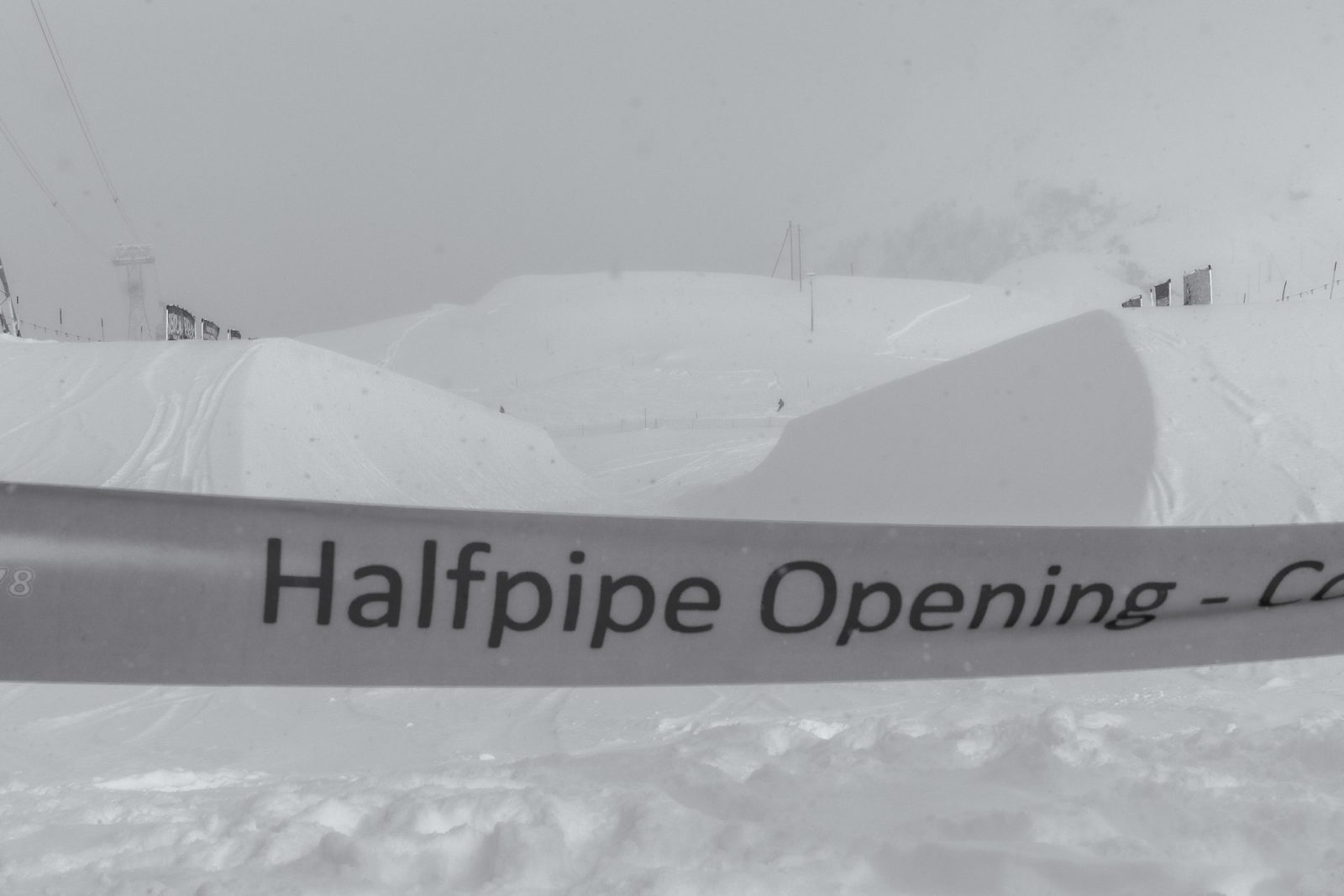It’s not every day that a new halfpipe opens to the public. So when I received an invitation to the opening of the new halfpipe in Corvatsch last month, I had to go check it out.

Stories
HighlightPipe dreams
The world’s newest halfpipe just opened in Switzerland
Let’s face it: Halfpipe, in both skiing as well as snowboarding, is not exactly a booming discipline. Although the contests this year have been exciting to watch, with new tricks being thrown and a new generation of riders mixing up the game, the overall trend has been on the decline.
That’s due in part to the prohibitive costs involved in building and maintaining a full-size halfpipe, which easily run into the millions each year. All that for a highly specialized facility that only a few top-level athletes, and even fewer members of the general public, can truly take advantage of. So it’s no wonder that the number of full-size halfpipes has dwindled in recent years.
So where can we look for ski resorts that have the money and inclination to invest in this rare breed of snowpark infrastructure? Of course, it’s Switzerland — at Corvatsch, to be specific.

A rising freestyle hot spot
Across the valley from its more famous neighbor St. Moritz, Corvatsch is already well-known in the freestyle scene. Its snowpark is a favorite destination for pros to train, and hosts the annual finale of the World Cup slopestyle season in March. With its sights set on becoming a mainstream freestyle destination akin to nearby Laax, Corvatsch is preparing to host the FIS Freestyle World Championships in 2025, the most high-stakes big air, slopestyle and halfpipe contests outside of the Olympics and the X Games. The brand-new halfpipe is part of those preparations.
At a press conference before the halfpipe opening, it quickly became clear just how broad the scope of Corvatsch’s freestyle aspirations are. Everybody is on board, from the mayor to the local tourism board to the Swiss ski federation. In other words, this isn’t just a resort digging a hole in the ground to build a pipe—it’s a massive, coordinated and years-long effort to reshape the face of tourism in the region.

What’s in a pipe?
When riders roll up to a snowpark they expect to find perfectly shaped features, often taking the long and costly process of creating those features for granted. Let’s take the new Corvatsch pipe as an example.
After years of planning, earthworks for the halfpipe began in September 2022 and continued through the summer of 2023, with initial construction costs of 4.8 million Swiss francs (about 5.5 million US dollars). Unlike many other pipes, where the earthworks consist of large berms built up on the ground, the Corvatsch pipe was dug into the ground — literally dynamited out of the rocky slopes of the mountain.

Earthworks in sensitive Alpine areas are always subject to environmental scrutiny, and the Corvatsch pipe was no exception. From the beginning, the project coordinated with various nature conservation agencies to limit the impact on the surrounding environment. In fact, the topsoil of the entire area of the pipe was painstakingly removed, stored intact, and replaced at the end of the process—a huge undertaking to preserve the ecosystem of the area.
The decision to embed the halfpipe into the terrain is an ecological as well as economical choice. This design approach reduces the amount of snowmaking required to produce the pipe, saving water, electricity and snowcat hours.
The grand opening
On Saturday, February 24 it was finally time. A crowd of media, staff, riders and local dignitaries packed the slope above the new halfpipe as a red ribbon was spanned across the drop-in. The Swiss team had already tested the pipe the week before—now it was time for its official public opening.

A recent storm had just deposited around 70cm of light, fresh powder in the days before the opening, but the pipe was freshly groomed, despite a decent layer of fluffy stuff in the flat bottom. The sun broke out through the clouds just as the ribbon was cut, and a rapid-fire procession of riders—skiers and snowboarders, veterans and young guns, pros and amateurs—charged into the new pipe in a cold cloud of airs and stoke.
I’ll admit, at first it seemed just a little bit absurd to be attending the opening of a halfpipe, on an epic powder day, no less. But after contemplating all of the time and effort that’s gone into building this infrastructure, then seeing the joy in the faces of the dozens of kids who’d showed up to ride this pipe on its first day, it started to make sense.


Still, powder is powder. After an hour or so of pipe laps (the lap on this pipe has been clocked at under four minutes, by the way), it was time for lunch at the middle station. Afterwards, I linked up with Völkl team manager Schinka and a few of his riders, including seasonal local Lukas Swieykowski and Alex Ferreira, to sample some of Corvatsch’s finest powder. Luckily we had Lukas to show us around, and soon enough we were blasting and whooping our way through one of the deepest days of the year.
Pipe in the morning, powder in the afternoon—okay, the order may have been off, but that’s a damn good day of skiing. One that future visitors to Corvatsch will be able to enjoy for a long time to come.
Read more about the new halfpipe
corvatschpark.chThe new Corvatsch halfpipe at a glance
Location
Just below the Murtèl middle station
Elevation
2,700 meters above sea level
Height
7 meters (23 feet)
Length
Currently 170 meters, 180 meters in 2025
Gradient
18%
Season
November to April (weather dependent)





